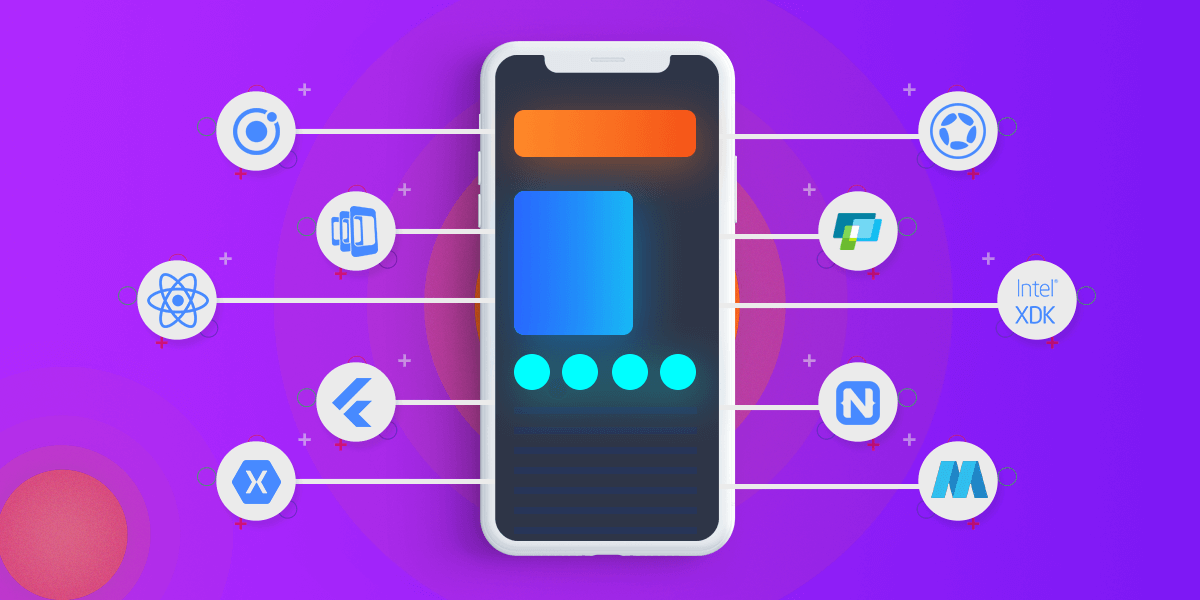Statista research has revealed the top five frameworks for Android app development in 2022. Developers are looking for a framework that allows them to be more creative and less likely to hit speed bumps along the way. They also want a framework that is flexible enough to allow them to customise the user experience and quickly fix bugs.
Here is a breakdown of the top 5 frameworks for Android app development. Which one would you choose?
Ionic
If you are looking for the right tool for Android app development, consider the Ionic Framework. With the Ionic framework, you can develop native-like applications on both iOS and Android platforms. The Ionic framework is a cross-platform application framework, with a single codebase. It supports both native-like apps and progressive web applications. It also supports Material Design themes, which are popular among developers. And it is a popular choice for mobile app development because it offers developer-friendly tools and resources.
The Ionic framework has many benefits, including high productivity, ease of use, and speed. It is one of the most popular cross-platform development tools, with more than five million applications created to date. With its wide compatibility, Ionic is the best choice for developing mobile apps that are compatible with all devices. You can get an Ionic app developed in just a few weeks, which means you can launch it to market before your competitors.
Another example of an Ionic app is MarketWatch. This high-tech food delivery service uses the Ionic framework to build its customer-facing application. It serves over 500,000 shoppers in 260 cities, and its developers use DevOps to regularly update the app. Another example of a mobile app that uses the Ionic framework is Untappd, a social networking app for beer enthusiasts. It is a great way to rate a beer and share what you’re drinking with friends. Ionic helped Untappd translate its native UI into an Ionic-friendly one, and used components such as Checkmarks and Toggles to give it a native look and feel. Ionic also helped the company get a quicker development cycle for the app.
Ionic is a cross-platform development platform for iOS and Android devices. It is compatible with the most popular mobile platforms and allows developers to employ a variety of UI components. Moreover, Ionic is free to use. It is an excellent choice for those who are just starting out in mobile app development. But what is the Ionic Framework? Here are the three top reasons to use Ionic today.
Sencha Touch
Developers who use Sencha Touch are equipped to build dynamic and functional Android apps. It’s over 50 UI components make it ideal for building high-performance Android apps. If you want to become one of the top developers in the future, you should be familiar with Sencha Touch. Additionally, you should have experience developing innovative apps using all the leading frameworks. For the best results, consider using this framework for your next Android project.
Corona is a cross-platform mobile development framework that uses Lua as its backend framework. This multi-paradigm programming language is lightweight and robust, and has over 1,000 built-in APIs. It also includes a dynamic advertising platform and supports native UI and real-time testing. Sencha Touch focuses on building native Android apps using HTML5 and JavaScript. In addition, it incorporates hardware acceleration techniques.
NativeScript is another popular cross-platform framework. It supports JavaScript as its core language, and other languages can be used as a backend. It does not require an IDE to run apps with it. Instead, the framework’s components run inside your favorite web browser. This makes it easier to develop hybrid apps than many other Android frameworks. It also provides developers with full access to iOS APIs.
SproutCore is another Android framework. It has a clean MVC design and supports native themes. It has over 50 UI components that provide a high-quality, smooth scrolling experience for the user. The framework also supports drag-and-drop assembly, which makes it a great choice for information-based Android applications. And it is compatible with HTML5.
NativeScript
NativeScript is a free, open-source, hybrid app development framework that is compatible with Angular, TypeScript, and Vue. NativeScript was developed by Telerik, a Bulgarian software company, and offers developers a rich set of plugins. The framework enables developers to build progressive web applications and cross-platform apps with a single source code. It supports both Android and iOS development.
Corona is a cross-platform development framework based on Lua, an open-source language that’s lightweight and powerful. It features a multitude of plugins, and can even build custom applications for iOS and Android. In addition, Corona supports a variety of platforms and is easy to learn and integrate. As a cross-platform development framework, Corona allows developers to build native Android apps and games, and has been used by many giant companies.
NativeScript has a well-designed MVC architecture, and it also supports JavaScript, TypeScript, and Angular. In addition, it includes a complete set of tools for testing, deployment, and routing. It also provides direct access to native platform APIs. NativeScript is also easy to use for cross-platform development, reducing developer time. The best part is that NativeScript is completely free.
React Native is another cross-platform development framework that can solve many of the problems associated with Android development. The AppBuilder lets developers easily integrate their code with social media and the Android play store. With its hot-reload feature, developers can connect updated files and keep the app’s current state in mind when making updates. The AppBuilder also features built-in blocks and integrates with Google Play and other social media. NativeScript is one of the best frameworks for Android app development in 2022.
Xamarin
Using the Xamarin framework for Android app development will allow you to develop cross-platform apps. The benefits of using this framework are clear: it allows you to cater to a broader audience. The cross-platform development of apps will ensure that your product is successful and can grow along with your customer base. However, in order to benefit from the cross-platform capabilities of Xamarin, you will need to know how to hire qualified Xamarin developers.
The benefits of Xamarin include being cross-platform, which means developers can share their business logic across different application development platforms. This will reduce the time and effort spent on maintaining code and will make future projects easier to modify. Its built-in support for iOS and Android development in Visual Studio makes it very easy to develop cross-platform apps. Another benefit is that Xamarin apps are larger than native apps, adding between 5–20 MB during rebuilds. Lastly, Xamarin apps are not as well-suited for games or animation, which are essential to successful app development.
Xamarin developers need to be proficient in declarative programming. They should be familiar with third-party libraries and APIs and should be able to develop performant apps from source code. In addition, Xamarin developers need to have prior experience using an IDE and should know how to use the various core build tools. There are other advantages to Xamarin that make it an easy choice for app developers.
Xamarin is a powerful framework for developing cross-platform apps. Compared to React Native, Xamarin offers more functionality and is faster to develop. For example, UPS uses Xamarin for its mobile application, which allows users to easily create and manage shipments on the move. Moreover, it has helped UPS increase its productivity. Another example of a successful Xamarin project that is being developed with Xamarin is FreshDirect. This online grocery delivery service specializes in organic and local produce, custom cuts of meat, and chef-made meals.
Apache Cordova
Developed by Nitobi, the Apache Cordova framework is a developer-friendly mobile app development framework that uses JavaScript, HTML, and CSS to create cross-platform applications. Its powerful plugins give developers access to native app functionality and device hardware features. Examples of successful Cordova applications include Wikipedia, Paylution, and The DHS Program. Listed below are some of the major advantages of using Cordova.
As an open-source hybrid framework, Cordova allows developers to build cross-platform apps using JavaScript, HTML, and CSS3. Its hybrid approach supports offline and multi-platform scenarios and allows developers to build hybrid apps with a single code base. Cordova is a free Android app framework and is compatible with various web-development languages. It is a perfect framework for developing hybrid applications.
Its powerful community of 5 million developers makes it easy to use and scalable. However, there are some downsides to using Cordova. The first is that it requires native plugins, which are not fully stable. Also, the framework has some unpredictable crashes, and error messages can be unclear. However, these aren’t the main reasons to avoid Cordova. If you’re developing for Android, it may be the best framework for your development needs.
If you’re looking for a cross-platform mobile app framework, Apache Cordova is the one for you. Its one-time-code solution allows developers to write a single piece of code and target a vast audience. It also allows developers to choose the platform that best suits their needs. For example, Flutter supports the Android platform. This is a good sign of Flutter’s popularity.




